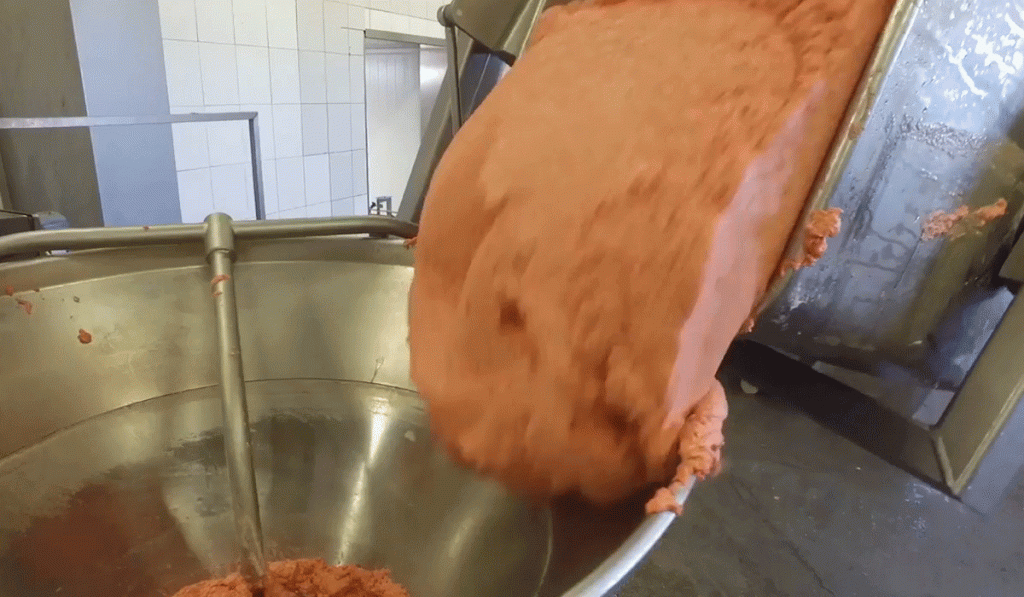Investigating the status of export & import of canned pet food
Investigating the status of export & import of canned pet food Seamerco research

SEAMERCO Industrial Group has launched a canned pet food production line. The pet food canned production line manufactured by SEAMERCO Company, using pressure cooker devices, three-wall combined formulation devices, and a multi-stage chunk production device, offers a wide range of products. It is produced with various formulations. The pet food canned production line is designed and implemented in two workshop and industrial formats, depending on the product’s production & variety. The daily production capacity of 1 – 2 tons of products in a workshop space of 200 – 350 square meters and the daily output of 4 – 6 tons of products in an industrial area of 600 – 800 square meters can be implemented. All SEAMERCO industrial group lines have 18months warranty and ten years after-sales service.













The rolling process is used for products such as pate and chunk to grind & mix materials. An industrial meat grinder does this process. It has a reverse-rotating gearbox that can rotate various meat and non-meat materials.

A cooking pot does the initial cooking to facilitate waste separation and soften the meat texture. For this purpose, after cutting the meat into pieces, it is placed on the trolley trays of the cooking pot and inserted into the rail of the machine, and the final cooking is done by saturated water steam.

Filling materials that have a small volume or weight and considered part of the ingredients of the final product is done by the additive tape and the operators stationed on its sides. This machine has a central rail & tanks for holding additives.


18nozzles rotary solid filling machine fill broken materials in products such as chunks. After the chip is produced in the relevant device, it is dried, cut into pieces of meat, and transferred into the hopper filler, which fills the product inside the can with each rotation.

One of the main parts of the production process is the formulation of the solution poured on it after the solid product is filled in liquid form. The contents of this part are the sole responsibility of the production manager. Two-walled or three-walled formula tanks are used with a stirrer.







As explained above, the machinery of the canned pet food production line consists of four parts: preparation, production, packaging, and facilities, depending on the type of product (pouch, pate, chunk, cat ice cream) and the daily production capacity. Its machines are selected.
As these issues have already been mentioned, some things should be considered for this purpose, some of which are:
Supply and demand of the product, easy access to raw materials, access to the sales and consumption market, and considering the production costs in proportion to the initial investment are all important in determining the type of manufactured product.
Several points should be considered regarding the factory’s location for setting up canned pet food. First, the factory’s location is either close to the source of raw materials or to the consumer market, as long as you have a plot of land or a shed. The fact that you are the owner and do not pay for the purchase of the property or rent cannot be the criterion for determining the factory’s location.
One of the services of Seamerco Industrial Group for customers who make this request is to provide factory design and implementation of construction parts, equipment, and machinery needed in the production line by the standards of the National Standards Organization and the product production process, which for this It means that the software related to civil and industrial design is used and provides a simulated image in 3D form to the customer before the implementation of the factory.
A capacity that, in addition to justifying fixed and current costs, can introduce your product in the market.
The steps that are usually mentioned in standard phasing are:
SEAMERCO industrial group has participated in setting up 170 domestic factories and 35 foreign factories.



Investigating the status of export & import of canned pet food Seamerco research
The Complex Process of Producing Pet Food: Inside the Factory Seamerco research team
Exploring the Diversity of Pet Food: An Overview of Types and Considerations Seamerco